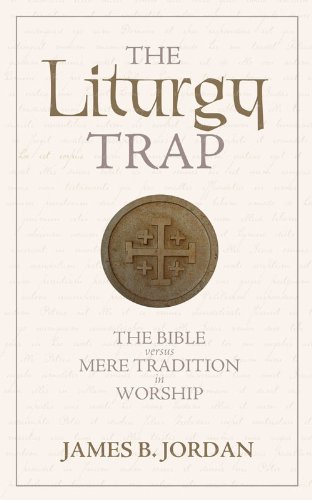In my Canterbury Letters, I interacted with a Calvinist who believed that icons were idolatrous, especially when used in worship. During the process of this dialogue I responded to the iconoclastic arguments of James Jordan that he put forward in his little polemic The Liturgy Trap. Here is what I wrote about the legitimacy of images in worship:
The people of God always understood that the plethora of images throughout the temple was fundamentally different to the images of false gods, the worship of which God had forbidden by the second commandment (Duet 5:8-9; Ex. 20:4-5). They also apparently saw no contradiction between the Lord’s command to make these carved images for the temple, on the one hand, and his prohibition of “likenesses” in Deuteronomy 4:16-19, on the other.
You referred me to James Jordan’s The Liturgy Trap, where he wrote that the second commandment “means that no pictures of God, angels, or saints are allowed. It also means no pictures of men, dogs, whales, trees, or anything else are allowed.” Based on this understanding of the Second Commandment, Jordan goes on to dismiss the Roman Catholic, Eastern Orthodox, and Anglo-Catholic traditions as semi-idolatrous. Well, my question would be simply this: how do you square this with the fact that God mandated pictures of both angelic beings and animals in His temple? Even James Jordon, when writing about the temple shortly after the section you quoted, has to qualify his earlier prohibitions by saying that “We are free to make pictures and sculptures of things in the creation, including heavenly things…it is not wrong to have pictures, including faces, in the house of worship–provided we never, ever bow down toward them.” Then later on he adds another qualification: not only are we never to bow down to the pictures in the house of worship, but we are not allowed to even look at them. As he says, “the only thing to look at in worship is other people.” I must confess that all of this seems to be simply splitting hairs and utterly pedantic. What is the point of allowing pictures in the sanctuary if people are not allowed to look at them? Does this mean that the art God ordered for the temple was never intended to be looked at? Even though the whole temple complex was designed to facilitate the worship of God, are we to conclude that the graven images in the temple were extrinsic rather than intrinsic to such worship?
Even some Presbyterian scholars have recently been forced to recognize the complete illogicality of the iconoclast position. For example, in the IIIM online Magazine, Volume 6, Number 6 (published on Dr. Richard Pratt’s Third Millennium website), Ra McLaughlin wrote an excellent article, “Are Images of Christ Sinful?” In the article he writes that “As I understand the passages in Exodus and Deuteronomy, they prohibit the making and worshiping of false gods. They do not specifically prohibit the use of images in the worship God…”


